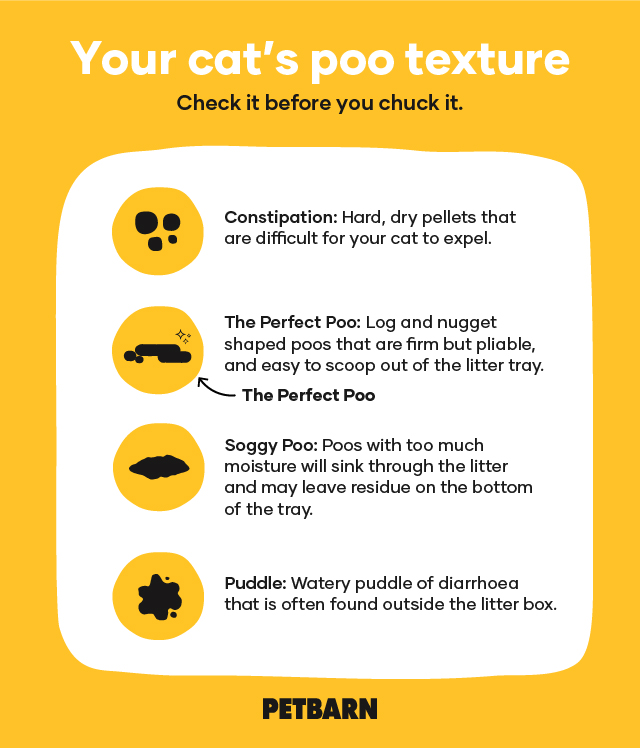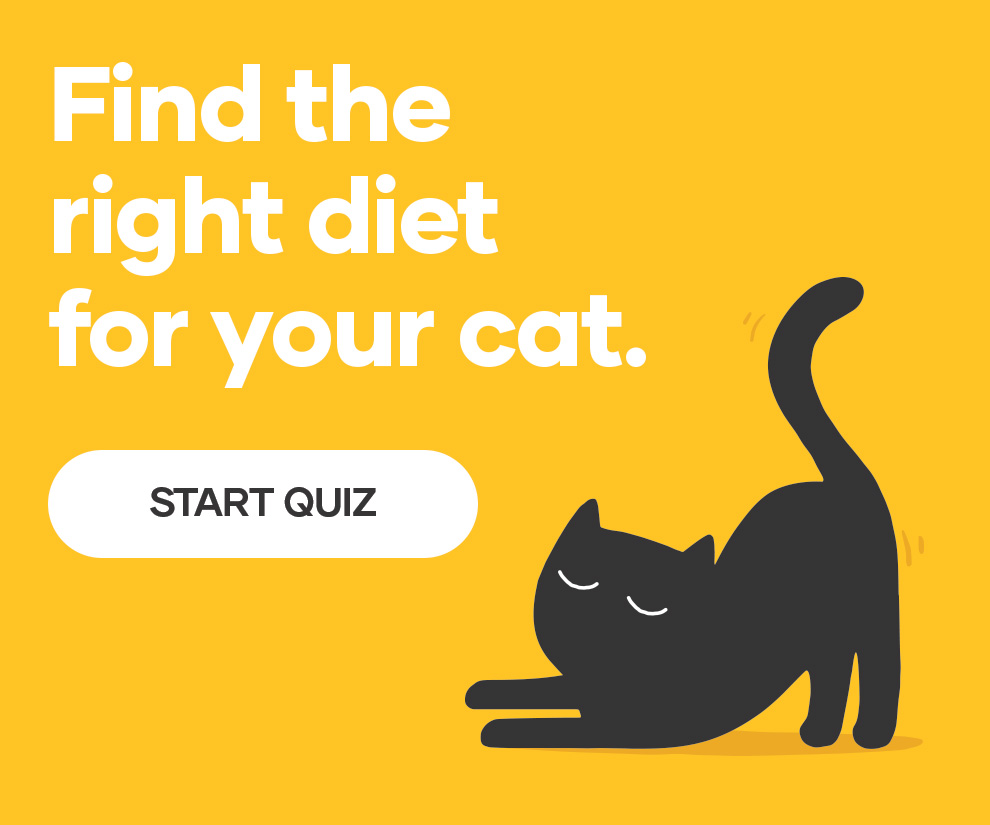Does your cat have runny poo all the time? Or maybe they’re producing hard and dry pellets? The texture of your cat’s poo reflects the quality of diet they’re being fed, and gives you a window into their current health and well-being.
You spend a little time every day scooping your cat’s poo out of the litter box, but have you ever stopped to inspect it? Faecal examinations are a routine part of the health check your cat should be receiving every 6 months, but they’re also something you should be doing at home in between vet visits. Learn to interpret what the texture of your cat’s poo is telling you about their health and nutrition. Often, the first place a poor diet shows up is in the poo.
While your cat may experience one-off bouts of stomach upsets, their poos shouldn’t change too much from day to day if they’re being fed a regular diet. However, a sudden change in their diet can result in diarrhoea and different food going in will mean different poos coming out. If you want your cat’s poos to change for the better, using our Cat Food Finder to improve their diet is the best way to go.
Cat poo texture chart
When cleaning the litter box, one of the first things you’ll notice about your cat’s poo is its texture. This can range from small pieces of dry and hard poo, to entirely runny puddles of poo that might not even be in the litter box. These two extremes are clear indicators that your cat is experiencing health problems, as a healthy cat will produce a poo that’s somewhere in between – firm, but still pliable. Use our cat poo chart below to see how your cat measures up and how their poo can give you an insight into their health.
Constipation
Hard and dry poos, or when they’re struggling to poo at all are signs that your cat is likely to have constipation. This is an uncomfortable experience for your cat, but by understanding the symptoms and causes, you can give them the care and nutrition they need to reduce the occurrence.
A common cause of constipation in cats is a buildup of hair in their digestive tract that blocks the healthy passing of waste. In this situation, it can be beneficial to feed your cat food that is specifically designed to combat hairball control. This food provides your cat with added fibre to aid digestion, and nutrients to promote a healthy coat and reduce shedding.
Dehydration is another factor that could cause your cat to be constipated. A simple way to increase your cat’s water intake is to include wet cat food into their regular diet. Try our Cat Food Finder tool which takes into account your unique cat’s needs, for example their age, breed, need for hairball control and lifestyle to recommend the best combination of wet and dry food for them.
If your cat is regularly experiencing constipation, making the switch to super premium food can significantly improve their digestive health. It’s always best to consult with your local Greencross Vets when your cat has constipation as this can be a symptom of other health issues.
The perfect poo texture
When your cat is in good condition and being fed the right diet for their age, breed and activity level, they will produce healthy poos. The perfect cat poos are not too runny and not too dry. They should be shaped like long logs or small nuggets and you’ll find that they’re firm but still soft when you press down on them, much like the consistency of playdough. These poos will be comfortable for your cat to pass, and easy for you to remove from their litter tray each day.
A major benefit of feeding your cat super premium food is that their poos will improve, becoming smaller and less smelly, due to the high quality of nutrients contained in this food. By using our Cat Food Finder to understand the right diet for your unique cat, you can optimise their health and visibly track the improvement in their health through looking at their poo.
Stages of diarrhoea
Soggy poos and puddles
Once your cat’s poo is too soggy to maintain its form when you scoop it out, it’s no longer a healthy poo and is in the stages of diarrhoea. These soggy poos are often very messy as their lack of consistency means they will seep through the pieces of litter and leave residue on the bottom of the tray, forcing you to clean it out entirely. Even worse is when your cat doesn’t even make it to the litter tray and leaves you a smelly puddle of poo elsewhere in your house. Diarrhoea clearly signals a problem with your cat’s health so what can you do to stop this from happening?
Your cat may experience diarrhoea for a number of food-related reasons including food intolerances, sudden changes to their diet, and other reasons like stress and internal parasites. If your cat is regularly producing soggy poos and diarrhoea, then they may be sensitive to an ingredient in their diet. Your cat will have an upset stomach each time they eat this food so it’s best to book at an appointment with your Greencross Vets to discuss your cat’s food intolerance. Once you remove the offending ingredient from your cat’s diet, their stomach should recover and they’ll be producing more solid poos in a few days.
While switching your cat to super premium food is the best way to improve their health and standard of living, remember to never change your cat’s diet too suddenly as this will also cause them to have diarrhoea. A gradual transition over 10-14 days is the right way to go, and some cats may even take up to 4 weeks to fully transition to new food. In the event that your cat does have diarrhoea, provide them with water and make sure they don’t become dehydrated, and see your local Greencross Vets if you have any questions.
How to feed your cat right
Eating a complete and balanced diet that’s formulated for your cat’s age, breed and lifestyle will ensure that your cat is happy and healthy, and producing perfect poos that make their trips to the litter tray satisfying, and your clean up as easy and pleasant as can be. Use our Cat Food Finder or speak with a trained team member at your local Petbarn to learn what the optimal diet for your cat is.




